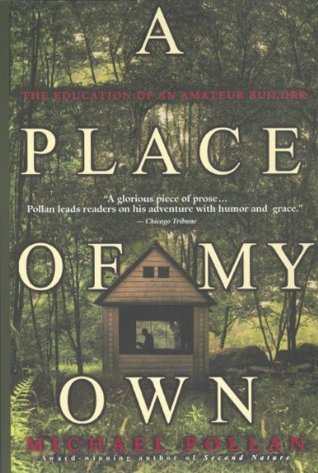More on this book
Community
Kindle Notes & Highlights
Yet I felt that by choosing its site—a single place out of all possible places in which to build—I was setting this great big contingency in motion, rolling it down the steep, one-way hill of personal and local history.
What is a place after all but a bit of space that people like me have invested with meaning?
It might be that I wished for a place that stood a little apart from this life of mine, but only to get a better view.
For building seemed to me to be one of the most tangible, and grounded, and factual things that human beings do—the closest we ever come to making something on the order of nature, something with the sheer, incontrovertible presence of a tree or a rock.
Eisenman himself claims that buildings are no more real than stories are, and in fact has urged his fellow architects to regard what they do as a form of “writing” rather than design. The old concept of design—as a process of creating forms that help negotiate between people and the real world—might have made sense when people still had some idea what “real” was, but now, “with reality in all its forms having been pre-empted by our mediated environment,” architecture is free to reconceive itself as a literary art—personal, idiosyncratic, arbitrary.
“Nature is hard to overcome,” we read in Walden, of all places, “but she must be overcome.” This, according to Le Corbusier, is architecture’s first principle and purpose: to defy time and decay. That, and to wrest a space from nature to house all those things we value—books, conversation, marriage—that nature has no place or use for. A good foundation, these three and a half feet of concrete interposed between me and the damp, hungry ground, is how we start.
But after a while I began to appreciate that such compromises were an inevitable part of the work of building, if not, in some sense, its very essence.
The laborer produces nothing lasting he can call his own, and both the man of action and the man of thought are ultimately dependent on other people, without whose regard and remembrance their deeds and creations do not matter or endure.
In the modern view, the pitched roof was itself a “dead concept,” but equally unhealthy were all those other dead concepts that got stored underneath the gable, in the attic. For there is where the ghosts of our past reside: the bric-a-brac and mementos that a lifetime collects; the love letters, photographs, and memories that clutter an attic and threaten to bear us back in time.
“Very often architects seem to be afraid to just come out and say they like something, they think they’ve got to take it back a little. So they’ll use some element they like—these dentils, say—but they’ll do it ironically as a way of protecting themselves. I suppose it’s partly a matter of audience: Is your audience your client, or is it really New York and L.A. and the magazines? Because if that’s who it is, then you’re going to want to somehow announce you’re a sophisticated, postmodern guy, that all this is just theater, instead of being willing to come out and say, ‘This is not theater.
...more
Architecture might be done with nature, but the experience of House VI, now on its third roof, suggests that nature will never be done with architecture.
You say to brick, “What do you want, brick?” Brick says to you, “I like an arch.” If you say to brick, “Arches are expensive, and I can use a concrete lintel over an opening. What do you think of that, brick?” Brick says, “I like an arch.”
Materials are so essential to our physical experience of a place that to disregard them—to ignore the coldness of steel, the dumb strength of concrete, the sympathy of wood, whose temperature never startles—is to throw away a great deal of architecture’s expressive power. Is the nature of that power linguistic? Certainly my shingles signified specific things to my mind (“New England,” for example), but they also addressed my senses more directly, with their aroma, their delicateness, with the impression they gave my hands of wanting to be layered and woven for strength. It seemed to me you
...more
Charlie had come from a meeting on a new job he’d landed nearby; he was wearing his country-client attire, a graph-paper-checked shirt, chinos, and a sweater vest that together managed deftly to say to the client: informal yet billable.
As Walden itself teaches us, we humans are never simply in nature, like the beasts and trees and boulders, but are always also in relation to nature: looking at it through the frames of our various preconceptions, our personal and collective histories, our self-consciousness, our words.


